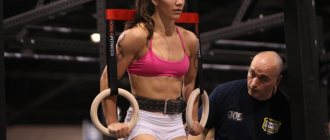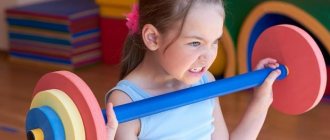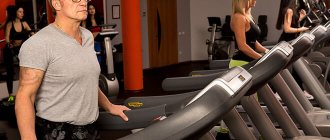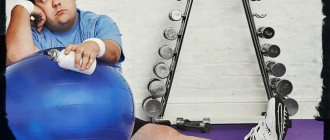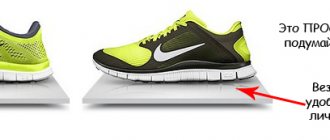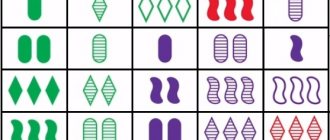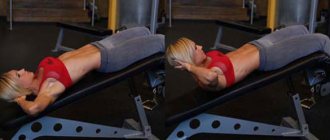Water
Vital during training, because dry mouth will not bring you anything good. On the contrary, it can only cause harm (dizziness, nausea), don’t be afraid, water is not high in calories, you can drink it as much as you like (of course, if it’s plain water, not Coca Cola, etc., otherwise it will already be high in calories) + water during training , enveloping joints and penetrating soft tissues, protects them from injury.
For those who have amino acids in soluble (powdered) form, they can be mixed together with water and absorbed during exercise for maximum effectiveness. (not necessary)
Conclusion: take at least 1-1.5 liters of plain still water with you.
It’s good to have it with you during training and why we’ve already discussed it. Now I present to you the preparation of a training complex, day by day and week by week.
I identified 4 training programs that I based on:
- For beginners (3-4 or 2 workouts per week)
- for intermediate level (split 3 days a week)
- for intermediate level and more experienced (split both 3 and 5 days a week)
- for experienced athletes (split 5 days a week)
How to start bodybuilding at a young age!
I am 26 years old now, but I remember my teenage years very clearly. I was intimidated, bullied and ridiculed. I had low self-esteem and no self-respect.
At some point, I decided it was time to do something about it, rather than spend the rest of my high school years beating myself up. Luckily, I started lifting weights and later took up bodybuilding.
Over time, it has improved my life in many ways, giving me more confidence and self-belief. I also remember how awkward I was when I started bodybuilding as a teenager.
Over time, bodybuilding has improved my life in many ways.
When I first opened a bodybuilding magazine, I was immediately met with a sea of articles, advertisements, etc.
But the problem was that they all gave different information! Eat more proteins and fewer carbohydrates. No no no. More carbohydrates and moderate amounts of protein! Do only light loads. No, no, use more intense load!
I'm sure many teenagers have faced the same problem! Who to believe? Which sources of information are reliable and which are not?
Well, I won't arrogantly claim that I know everything and can't be wrong, but I have spent most of the last ten years of my life studying training and nutrition. I am currently writing a PhD in nutrition on the topic of muscle protein metabolism. So, I want to try to analyze everything that we know from the existing research and how you can apply it to get the maximum result.
I am also a professional bodybuilder with 7 years of competitive experience, so I have experienced many ups and downs with bodybuilding that I would like to discuss. We will also talk about how to make practicing this sport interesting and fulfilling.
For beginners (3-4 or 2 workouts per week)
Once you start bodybuilding using this training program in the gym, stick to it for at least 6 months. After which you can move on to the next training program.
The essence of this training program is as follows: we break the body into two workouts using a split. Split - translated from English. split. This means that we will split muscle groups on different days. Namely:
This is what a training split looks like:
- Day 1 – Legs, back.
- Day 2 – Chest, shoulders, arms.
After each such workout in the gym, we rest the next day. If you are not young or have a very stressful job, you can safely take two days of rest instead of one.
Therefore, in a week we will have either 3-4 or 2 workouts in the gym.
It will look something like this:
- Day 1. Monday - Legs, back
- Day 2. Tuesday - Rest
- Day 3. Wednesday - Chest, shoulders, arms
- Day 4. Thursday - Rest
- Day 5. Friday – Legs, back
- Day 6. Saturday - rest
- Day 7. Sunday - Chest, shoulders, arms
Etc. Did you get the point? For those who have a nervous job, constant stressful situations, poor nutrition, if you are already aged, etc. and so on. feel free to add two days of rest instead of one.
It will look like this:
- Day 1. Monday - Legs, back
- Day 2. Tuesday – Rest
- Day 3. Wednesday - rest
- Day 4. Thursday - Chest, shoulders, arms
- Etc.
Program and selection of exercises:
Legs-back
- Seated leg extension 4xMAX (to warm up the knee joints)
- Squats 1-2x10-15 (warm-up) + 3x8-12 (working sets)
- Leg press 1-2x8-10 (warm-up) + 3x8-12 (working)
- Pull-ups (if you can) or chin pull-downs 4x8-12
- Bent-over barbell row 4X8-12
Chest-shoulders-arms
- Bench press on an incline bench 1-2x10-15 (warm-up) + 3x8-12 (working)
- Incline Dumbbell Press 4x8-12
- Barbell press, standing from the chest 1-2x10-15 (warm-up) + 3x8-12 (working)
- Lifting the barbell for biceps 1x10-15 (warm-up) + 4x8-12 (working)
- Bars 4x6-12
For intermediate level (Split 3 days a week)
First of all, decide whether the first training program continues to work or not?
If you continue to gain strength and muscle mass, then nothing needs to be changed. This rule applies to any training scheme. As long as the set of physical exercises in the gym works, do not change it. If progress is not visible, move to the next level.
The essence of this training program is as follows: we pump the whole body in three workouts.
We train the back together with the deltoids, and the chest with the arms.
We have specially allocated a separate day for legs (this will allow for better training of the largest muscle group). We adjust the training days (Monday, Wednesday, Friday or Tuesday, Thursday, Saturday) to suit ourselves.
Stick to this program as long as you make progress, it is a very effective training system that will give you guaranteed results!
It will look something like this:
- Day 1. Monday - Legs
- Day 2. Tuesday - Rest
- Day 3. Wednesday – Back-Deltas
- Day 4. Thursday - Rest
- Day 5. Friday – Chest, Arms
- Day 6-7. Saturday-Sunday – rest
This is what a training split looks like:
- Legs
- Delta's back
- Chest Hands
Program and selection of exercises:
Legs
- Squats 4x8-10
- Bench leg press 3x8-10
- Seated leg extension 3xMAX (finishing exercise)
- Calf raises, standing 3x8-10
Back deltoids
- Pull-ups or block rows to the chest 4x6-12
- Bent-over barbell row 4x6-12
- Horizontal thrust 3x6-12
- Barbell press, standing behind the head 3x6-12
- Pulling (barbell row to the chin, medium grip) 3x6-12
- Abduction of arms with dumbbells to the side 3x6-12
Chest-arms
- Bench press lying on an incline bench 4x6-10
- Incline Dumbbell Press 3x6-10
- Barbell curl for biceps 4x6-12
- Bars 4x6-12
- French bench press, lying 3x6-10
For intermediate level and more experienced (Split 3 or 5 days a week is suitable)
The essence of this training program is as follows: we train one muscle group during training, the intensity of the training increases, because we have more strength, and we can fully work on a specific target muscle more thoroughly.
This is what a training split looks like:
- Mon. Breast
- Tue Back
- Wed. Legs
- Thurs. Shoulders
- Fri. Hands
Program and selection of exercises
Mon. Breast
- Bench press on an incline bench (30 degrees no more) 4x6-12 reps
- Incline dumbbell press (30 degrees) 4x6-12 reps
- Bench press on a horizontal bench 4x6-12 reps
Tue Back
- Pull-ups or pull-downs (for those who cannot do pull-ups) 4x6-12 reps
- Bent-over barbell rows 4x6-12 reps
- Horizontal block row 4x6-12 reps
- Lever row 4x6-12 reps
Wed. Legs
- Squats with a barbell on the shoulders 4x6-12
- Leg press 4x6-12
- Seated leg extension 4x6-12
- Lying leg curl 4x6-12
- Calves, standing in the simulator 4x15-20
- Calves sitting in the 4x15-20 machine
Thurs. Shoulders
- Barbell row to the chin with a medium grip (broach) 4x6-12
- Barbell press, standing from the chest 4x6-12
- Dumbbell raises to the side (swings) 4x10-15
- Swings, standing (3 approaches of a drop set, first heavy, medium, light all for 6-15 repetitions, rest 20 seconds)
Drop sets are sets where you drop weight. For example, take 12 kg for 6-15 reps, immediately take 10 kg for 6-15 reps, immediately do 8 kg for 6-15 reps, and do 3 sets of these with a rest of 20 seconds.
Fri. Hands
- Barbell curl for biceps 4x6-12
- Bars (emphasis on triceps) 4x6-12
- Hammers with dumbbells 4x6-12
- Close grip barbell press 4x6-12
Training program for muscle growth
The training program below for increasing muscle mass is suitable for experienced athletes, you can customize it to suit yourself, come up with additional exercises for different muscle groups, in general it is flexible, and you can easily control it yourself, the main thing is to follow the backbone on which it rests, and namely on basic exercises , and alternating light, medium and heavy training, that is, adhere to cyclicity.
Training program for gaining muscle mass
Light training is a type of training where the exercise is done for 12 repetitions, medium for 8, and heavy for 6.
Monday
- Squat with barbell 5x6
- Lying leg curl 4x8
- Bench press 4x8
- Weight bars 3x10
- Incline Bench Crunch 2x50
Wednesday
- Deadlift (classical or sumo) 3x12
- Bench press 5x6
- Shrugs with a 4x8 barbell
- Seated barbell press 4x8
- Standing barbell curl 4x8
- Hyperextension 4x12
- Hanging Knee Raise 4x15
Friday
- Squat with barbell 4x8
- Leg extension 3x12
- Bench press 3x12
- Lying dumbbell flyes 4x8
- Wide grip 4x8 pull-up
- Crunches 2x50
Downloads: 366, size: 252.3 KB, date: 24 Jan.
2019 You need to adhere to a clear alternation of light, medium and heavy training, this will be the key to the correct completion of the training program.
Explanation of the training program
The first number is approaches, the second is repetitions. That is, for example, 3x12 means 3 sets of 12 repetitions, in addition, you need to select the working weight in the exercises, this is done very simply. Before starting this training program, do a walkthrough , that is, lift the maximum weight in three main, basic exercises, in the rest, auxiliary exercises, it is not necessary to focus on working weights, lift the weight so that you can do it “cleanly”.
the maximum weight lifted as 100% , in the end we will get the following balance of forces: 3x12 you should overcome the weight at 65% of the max, 4x8 - 70%, 5x6 - 75%.
the warm-up approaches yourself, depending on how you feel, the main thing is to warm up the muscles and ligaments without overtiring, so that you have the strength to complete the main approaches in the exercise, you can additionally use a warming ointment.
You shouldn’t get hung up on the same auxiliary ( isolating ) exercises; change them, optimally once a month, since muscles can simply adapt to the load and stop growing. The same applies to the number of approaches and repetitions in all exercises, whether basic or auxiliary. If in the first week you did 5x6, for example, squats with a barbell, then in the next squat workout do 4x8, in the next 3x12, then again 5x6 and so on. Gradually, your muscle mass will grow, and along with it your strength indicators .
Your task is to progress in basic exercises , only then will you feel a pronounced increase in muscle mass and strength.
If we take the average athlete training using this method, then we can say with confidence that it works, the average gain over one year of regular training is in the bench press - 30 kg , in the squat with a barbell - 40 kg , in the deadlift - 40 kg . Depending on recovery and dedication to training, strength gains can be adjusted ± 10 kg.
Parallel bars exercise
We repeat that the emphasis should be on basic exercises (deadlift, squats, barbell press), they will give you an impetus to the growth of muscles and strength indicators. Auxiliary exercises, the so-called “auxiliary” exercises, are done to strengthen lagging muscle groups, as well as to complete and draw the relief , that is, basic exercises will give you rough muscle mass, and auxiliary exercises with dumbbells, on exercise machines, and so on will draw the relief.
Below are factors that greatly influence success in bodybuilding, and therefore muscle growth. Ignoring these facts entails a complete lack of understanding of the training process, and as a result, any training program stops working in principle.
Explanations for all training programs
- We use smart 2, 3, 5-day splits that do not cause conflicts in the recovery process.
- We use macro-overloading (gradually increasing the weights at each workout and working in the planned number of repetitions without breaking the schedule - we do not take heavier weights than planned).
- We keep a training diary, thanks to which we use both methods of load progression (1st method of repetition, 2nd method of increasing weights).
- We use basic exercises (these are exercises that involve several muscles or muscle groups; in short, these are heavy exercises that are performed with free weights). Why? The more muscles involved in the work, the better for the overall development of muscle mass.
- We use the golden mean, namely 3-4 working approaches, after 2 warm-up approaches (these approaches include a warm-up + a leading approach, where the warm-up is an empty bar, then add weight (50-60% of the working weight) in the range of 12-15 repetitions. Then add more weight and do a lead-in approach (already 70-80% of the working set) for 8-10 reps. And only then perform working approaches (100%).
- Each exercise performs 6-12 repetitions. The only exception is the calf muscles (shin) where we perform 15-20 repetitions. Why? The fact is that muscle failure should occur within 10-30 seconds. During this time interval you will have time to perform no more than 6-12 repetitions. But in the case of the calf muscles (lower leg), because... there the amplitude is very short, then where we managed to do 6-12 repetitions during this time, here we will have time to do 15-20 repetitions during this time. That's the whole secret to increasing the number of repetitions for the lower leg.
- If we use FAILURE (that is, the last repetition is a failure), you are no longer able to complete the last repetition of the exercise with the correct technique. Important: failure should occur within 10-30 seconds (6-12 repetitions).
Training methods in bodybuilding
If the workout takes place in a moderate mode, then the metabolism noticeably accelerates. This allows for greater activation of muscle tissue growth. Therefore, bodybuilders need to use a moderate pace during their workouts to gain the maximum amount of muscle mass possible.
Methodology of overcoming and yielding modes
Today this technique is quite popular among athletes.
Its essence lies in the use of working scales that exceed those available by 10–30 percent. Let's say you can perform a bench press with a working weight of 100 kilograms. In this case, when working in inferior mode, a minimum of 110 kilograms must be installed on the bar. You only lower the projectile yourself, and return it to the starting position with the help of a friend. You can also perform the movement to failure with a near-maximum working weight, and then a friend will help you complete a couple of more repetitions.
It is very important that your partner helps you return the projectile to its original position, and you must lower it yourself at a slow pace.
Cheating
This method is also very common among bodybuilders.
When you have completed a set until your muscles fail, and there is no friend nearby who could help you complete a couple more repetitions, then you should use cheating. To do this, you should use those muscles that were not previously involved in performing the movement, and use the inertial forces that arise. For example, when doing pull-ups it can be rocking, and when doing bench presses it can be lifting the pelvis. However, this method may not be used in every exercise. If you cannot create an initial acceleration, then cheating will not be possible. You should also be careful when using the technique to avoid injury. First of all, this applies to those movements in which the sports equipment is located above the head.
Isokinetic exercises
This technique is interesting because when performing the exercises, maximum or submaximal working weight is used.
When using the isokinetic mode, the resistance can vary depending on the capabilities of the athlete's muscles in any phase of the movement. It is also necessary to draw your attention to the fact that the speed of movement of biological links should not exceed 45 to 60 degrees per second. This is a very important point and should be given great importance. This technique is primarily aimed at developing strength indicators and is to a lesser extent intended for gaining weight. It is not suitable for beginner athletes and can only be used by experienced athletes.
Isometric and static exercises
All training methods discussed above belong to the dynamic training mode, the basis of which is repeated changes in muscle length.
However, in addition to this, static exercises can also be used in bodybuilding, the essence of which is to use maximum muscle tension for five or six seconds. In this case, the sports equipment is in a static state and does not move. During one lesson, you should not spend more than 10 minutes doing static exercises. These exercises work great on all muscle groups, but are primarily designed to increase strength. For this reason, bodybuilders use them extremely rarely.
You can learn more about the rules and methods of training in bodybuilding from this video:
[media=
https://youtu.be/p1xQWyx_JXM
]
Your actions before training
1) Open your training diary and see previous results for that week.
Then write down:
- Day of the week (for example, Monday)
- Muscle group (for example, chest)
- Number (for example, 07/1/2013)
- Working weight, sets, repetitions (for example, 50kg x 10 times x 4 sets).
In the last point, it is important to progress (look at the previous results for that week in order to know how much to increase the load now. All this is done in order to control the progression of the load using a diary (see below how to keep it).
How to keep a training diary
I think this method is the most convenient and understandable, but you can use other methods that are convenient for you (the main thing is that you understand the essence).
On the first Monday, I wrote out all the exercises, weights, repetitions, approaches. So that you understand, below is a clear example of how easy it is to do it (but I also added - here we use the 1st method, there is no need to write this, this is for you to understand).
Monday: breasts (07/1/2013)
- Incline Bench Press 50kg x 6 reps x 4 sets
- Incline Dumbbell Press 16kg x 6 reps x 4 sets
- Barbell bench press 50kg x 6 reps x 4 sets
Next Monday: chest (07/8/2013) – here we use the 1st progression method
- 50kg x 10 x 4
- 16kg x 10 x 4
- 50kg x 10 x 4
Next Monday: chest (07/15/2013) - here we use the 1st progression method
- 50 kg x 12 x 4
- 16 kg x 12 x 4
- 50 kg x 12 x 4
Next Monday: chest (07/22/2013) - here we are already using the 2nd progression method
- 53 kg x 6 x 4
- 18 kg x 6 x 4
- 53 kg x 6 x 4
2) Do a good warm-up. Warm up without weights. For 5 minutes, until your forehead is covered with sweat. Rotate your body, swing your arms up and down, left and right, jump rope...
This is where your imagination comes into play.
The purpose of the warm-up is to warm up the body, muscles, ligaments and joints and prepare the body for strength work.
Then proceed to the exercise, for example, bench press, perform with light weights (50-60% of the working weight) in the range of 12-15 repetitions.
Then add more weight and do a lead-up approach (already 70-80% of the working set) for 8-10 repetitions.
And only then perform working approaches (100%). All these warm-up and lead-up approaches are done in order to warm up and prepare the muscles for heavy strength work.
In the following exercises, the warm-up is no longer so important, you need to look at how you feel (for the psyche, you can also do a warm-up).
3) After each workout it is important to do a cool-down
Cool down - performed at the end of the workout.
It consists of calming exercises to calm the cardiovascular system, reduce the risk of blood stagnation in the muscles, prevent muscle pain, return contracted muscles to normal, lower body temperature to normal, etc. You can just lie down and relax.
4) Immediately after training after you enter the locker room, it is important to eat simple carbohydrates + fast proteins
At this time, the protein-carbohydrate window opens, and nutrients are absorbed many times better and faster. But remember, you can eat a full meal only after 30-40 minutes after training, so we eat fast carbohydrates + fast proteins.
For example:
- Simple carbohydrates (any sweet: chocolate, Snickers, gingerbread, banana, sweet juice)
- Fast proteins (Whey protein or amino acids, gainer, or regular boiled eggs).
Combined with proper nutrition, this training regimen will help you achieve fantastic results, believe me, I know what I'm talking about.
Okay, at this point, I gave you three training complexes (2, 3 and 5-day splits), told you about the features and explanations for all schemes, and gave step-by-step actions.
I took away the last set of exercises from these three, because it is radically different from those training programs. You will find out why by studying it!
Now I will share some bodybuilding tricks, namely, I will tell you about the fascia training system, “Fascia Stretch Training-Seven (FST-7).” Famous bodybuilders such as Jay Cutler, Phil Heath and others train using this system.
Fascia is a connective tissue membrane that covers organs, vessels, nerves and forms cases for muscles in vertebrates and humans; performs supporting and trophic functions.
When training the fascia, our main goal is to deliver as many vitamins, minerals, amino acids, oxygen, etc. as possible. into the muscle, as well as stretching the fascia that surrounds it - this allows you to achieve maximum muscle growth.
Fascia is a limiting factor in muscle growth, because the muscle grows only as long as there is free space. By training them in 7 sets in a pump style, we can stretch the fascia and thereby make room for muscle growth.
There are 3 types of fascia in the human body, but bodybuilders should only pay attention to one of them - the deep fascia. It is dense fibrous connective tissue that surrounds the muscles, bones, nerves, and blood vessels of the body.
The high density of this collagen fiber provides the deep fascia with its strength and integrity. Its expandability and elasticity are determined by the number of fibers. In other words, some of us have fascia that is thicker and more rigid than others.
Genetically gifted bodybuilders have thin fascia, so their muscles look larger and more puffy, classic examples being Ronnie Coleman and Phil Heath - these are people with thin fascia. Their muscles expand more easily.
But, for example, Jay Cutler has thick fascia. But as you can see, this did not stop him from gaining more muscle mass, but his muscles look kind of round.
How to train fascia?
You should train with heavy weights using basic exercises, generally as usual within 6-12 repetitions, when you have completed the planned number of exercises for a specific target muscle group, you must perform the last exercise at the end of the workout (usually in machines where isolating load) in 7 sets of 12-15 repetitions, rest between sets is minimal (no more than 30 seconds, this is the only way we will get the maximum possible pump (this will be fascia training).
The last exercise in 7 approaches is performed at the end of the workout with the same weight; as a rule, we reduce the weight by 30%.
For example, if you perform 70 kg on the bench press, then 70 * 30:100 = 21 kg. This means that the last exercise (fascia training in 7 sets will be performed with 21 kg).
It is vital to drink as much water as possible during training. At least 1.5 liters, depending on your personal characteristics (sweating), season and your weight. In summer you need more water.
Where did I start training?
This question is both simple and relevant. I started lifting weights using sandbags in my parents basement. Of course, there was a limit to my capabilities, but still I got a pretty good result for the first 6 months using basic exercises.
My parents eventually bought me a weight bench and some barbells and dumbbells, so my options expanded, but I soon outgrew those as well. I became a member of the local bodybuilding team and trained there for the last 3 years of high school.
If you can afford to go to a gym or your parents want you to work out and you can afford a membership, then I tell you from experience, it's worth it. The gym allows you to do more exercises and usually has a better atmosphere for exercising.
Some people prefer to workout alone in their garage or basement. And there is nothing wrong with this, but it will not be possible to perform as many exercises as in the gym.
Some gyms offer family discounts, so if you can convince your parents to buy a membership too, you may well save some money. Many parents (but not all) would appreciate the opportunity to give a gift that will keep their child in good physical shape rather than buying an XBOX 360 gaming console.
What exercises are best for the 7 sets of fascia training?
Basic compound exercises such as deadlifts, squats, etc. - a bad choice for two reasons:
- They involve other muscles and prevent them from giving full load to the target muscle
- Good technique and balance are required, which deteriorate when you try to complete a large number of sets in a short time.
The best choice is on simulators (because there is an insulating load), which is what interests us.
Basic bodybuilding training program
Ideally, distribute exercises with large muscles on different days of the week; you should not cram exercises on the back, chest and legs into one day. This will avoid a heavy load on the body in general and the cardiovascular system in particular.
The exception is the muscles of the back and chest: they can be trained in one day due to their close location to each other (you won’t have to pump blood for a long time), and also because they are antagonistic muscles (when working in one group, you involuntarily retract and second).
Using the same principle, it is recommended to train together: biceps and triceps, quadriceps and hamstrings, back and chest, etc.
So what kind of bodybuilding training program does a beginner need? Definitely basic! During the first six months of training, your body will get used to the load and performing isolated (targeted) exercises is simply pointless, so the emphasis in our recommended program is on exercises that will form the core muscles.
Your basic program might look something like this.
